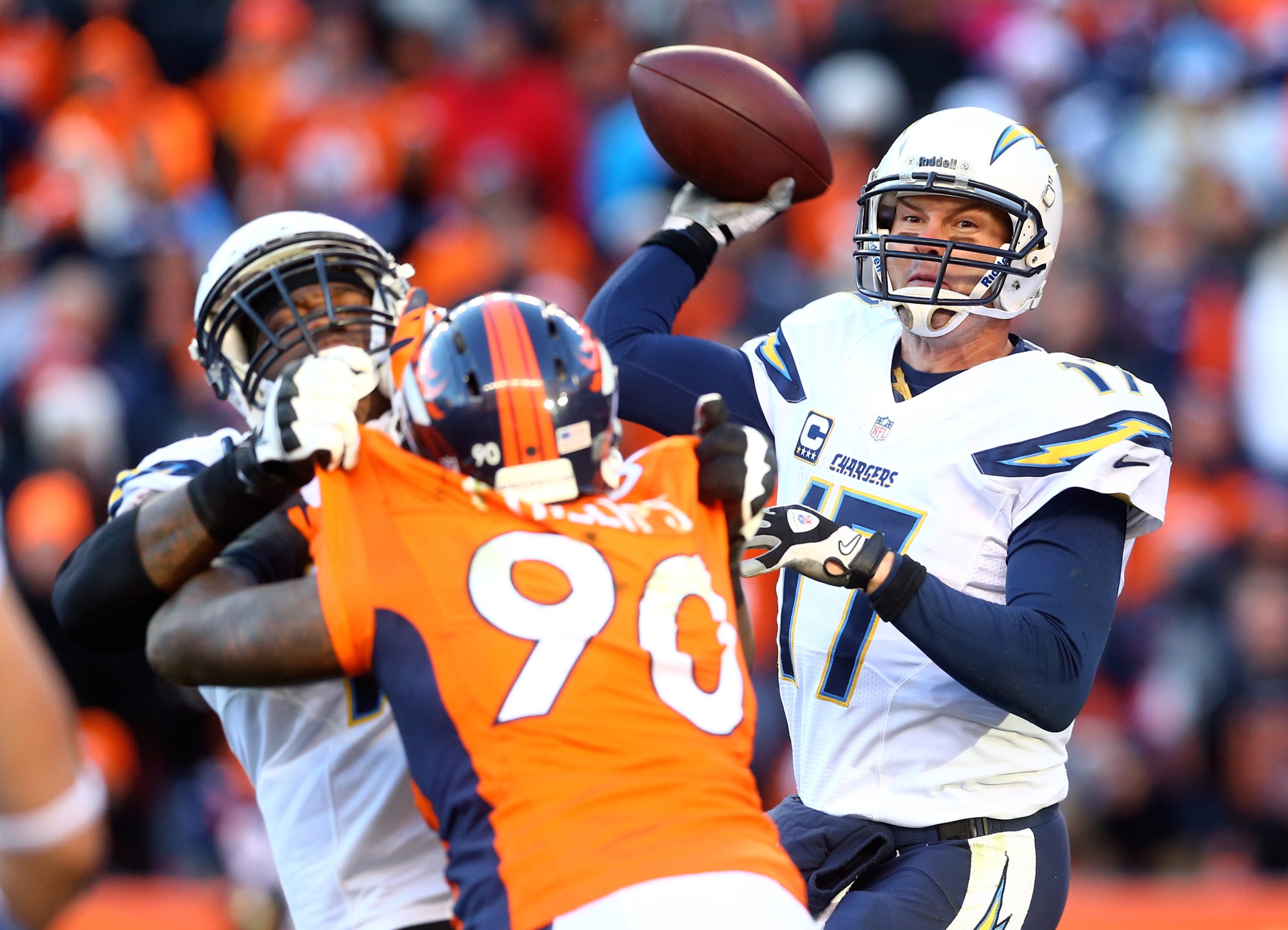
It was appropriate on so many levels when the Pro Football Writers of America selected San Diego Chargers quarterback Philip Rivers as the NFL’s Comeback Player of the Year for 2013.
In announcements made Friday, the PFWA also selected Chicago Bears wide receiver Alshon Jeffery as the 2013 Most Improved Player of the Year.
For Rivers, this was just the latest in a life full of second-look type recognition. He followed his only losing NFL season (7-9 in 2012) and 35 interceptions in 2011-12 by leading the Chargers to the playoffs while completing 348 of 544 passes (69.6 percent) for 4,478 yards, 32 touchdowns and only 11 interceptions.
Yet, despite those negative stats the previous two seasons, those who watched Rivers consistently since he was a first-round draft pick out of North Carolina State in 2004 saw him set at least 20 career franchise records. This is a franchise that once starred Hall of Fame gunslinger Dan Fouts (1973-87).
In reality, Rivers’ career in football has been a comeback affair, except for perhaps his first start at quarterback in the seventh grade. That is back when he acquired his unusual passing motion. As a kid still too small to really grip the ball, he held it like a shot putter. He grew to be 6-foot-5, 230 pounds but retained most of that little kid’s passing motion.
But when it was time to go to college, then-Auburn coach Tommy Tuberville took one look at the Alabama prep star’s passing motion and figured Rivers’ tough-guy attitude might be better at tight end. So he went to North Carolina State where he started 51 games and was named MVP in four bowl games.
In 2004 he became a pawn, of sorts, in a draft that also included Eli Manning and Ben Roethlisberger. Although Manning declared he would not play for the Chargers, they drafted him anyway with the No. 1 pick, which was really insurance to make sure they could get Rivers, who was selected No. 4 by the New York Giants. The Chargers and Giants then traded.
Even then, stardom — or even the starting job — did not come easily for Rivers, who arrived late in camp and was No. 3 on the depth chart behind Drew Brees and Doug Flutie. That season, Brees earned the NFL’s Comeback Player of the Year honors.
Rivers became No. 2 when Flutie was cut in 2005, but had little playing time until Brees dislocated his shoulder in the final game of the season. It was an untimely injury for Brees, who headed into free agency as the smallest starting quarterback in the NFL and a shoulder injury.
It was good timing for Rivers. Brees signed with the New Orleans Saints and on Sept. 11, 2006 Rivers began a streak of consecutive starts that is still ongoing. He is 79-49 and with five Pro Bowls along the way, including the one later this month.
This season, Rivers threw for 400 yards three times, tossed three or more touchdown passes in six games and completed a career-high 36 passes in a victory at the Philadelphia Eagles in Week Two.
During the Chargers’ season-closing four-game win streak, Rivers was 74-for-110 passing (67.3 percent) for 845 yards, nine touchdowns, two interceptions and a 142.6 passer rating.
Jeffery, who turned in a stellar second season after a rookie year marred by injuries, was selected as the 2013 Most Improved Player of the Year.
In 2012, Jeffery started just six games after missing four for a fractured right hand and two more for arthroscopic surgery on his knee. He had only 24 catches for 367 yards with three touchdowns.
Jeffery had a breakout year in 2013 with 89 receptions for 1,421 yards (second in the NFC) and seven TDs.
Veteran wide receiver Brandon Marshall took Jeffery under his wing and showed him how to train in the offseason and preached to him about the physical benefits that could be gained by using a nutritionist. Also, first-year wide receivers coach Mike Groh helped Jeffery refine his route-running ability and gave him the confidence to beat one-on-one coverage.
His work paid off as Jeffery set a club record with 249 receiving yards on a career-high 12 catches in Week 13 at the Minnesota Vikings. He also had 218 yards on 10 receptions in Week 5 vs. New Orleans to become one of eight players in NFL history to have a pair of 200-yard receiving games in the same season. He also set a club record for wide receivers with 105 rushing yards.
— The Professional Football Writers of America (PFWA) is the official voice of pro football writers, promoting and fighting for access to NFL personnel to best serve the public. The PFWA is made up of accredited writers who cover the NFL and the 32 teams on a daily basis.
